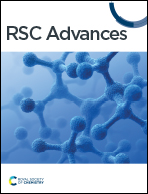Current status of controlled onco-therapies based on metal organic frameworks
Abstract
Despite consecutive efforts devoted to the establishment of innovative therapeutics for cancer control, cancer remains as a primary global public health concern. Achieving controlled release of anti-cancer agents may add great value to the field of oncology that requires the involvement of nanotechnologies. Metal organic frameworks (MOFs) hold great promise in this regard owing to their unique structural properties. MOFs can act as superior candidates for drug delivery given their porous structure and large loading area, and can be prepared into anti-cancer therapeutics by incorporating stimuli-sensitive components into the ligands or nodes of the framework. By combing through chemical and physical features of MOFs favorable for onco-therapeutic applications and current cancer treatment portfolios taking advantages of these characteristics, this review classified MOFs feasible for establishing controlled anti-cancer modalities into 6 categories, outlined the corresponding strategies currently available for each type of MOF, and identified understudied areas and future opportunities towards innovative MOF design for improved or expanded clinical anti-cancer applications.

- This article is part of the themed collection: 2024 Reviews in RSC Advances


 Please wait while we load your content...
Please wait while we load your content...